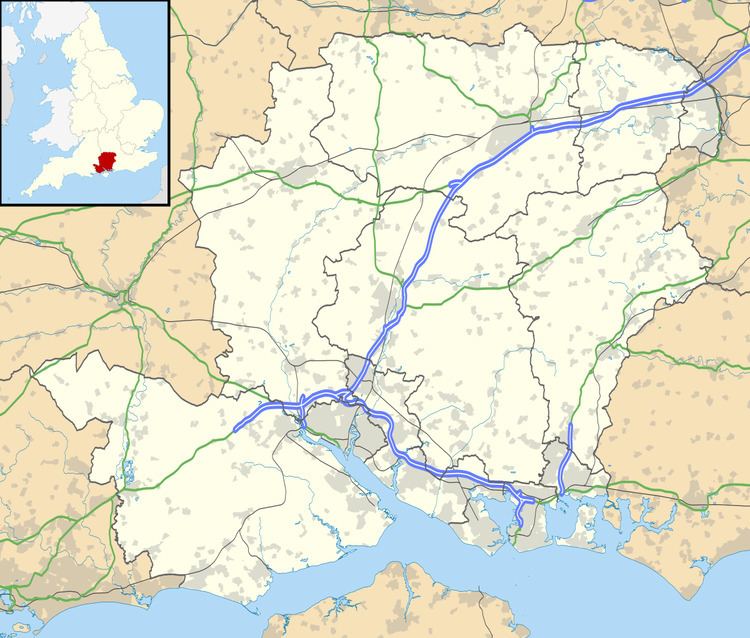Population 226 (2011 Census) Civil parish Newton Valence Local time Sunday 1:39 PM | OS grid reference SU723326 Sovereign state United Kingdom | |
 | ||
Weather 14°C, Wind E at 24 km/h, 50% Humidity | ||
Newton Valence is a village and civil parish in the East Hampshire district of Hampshire, England. It is 4.4 miles (7.1 km) south of Alton, just off the A32 road.
Contents
- Map of Newton Valence Alton UK
- The church and grounds
- Amenities
- Prehistoric settlement
- Famous residents
- Other information
- References
Map of Newton Valence, Alton, UK
The nearest railway station is Liss, 4.5 miles (7.3 km) southeast of the village, although the station at Alton is a similar distance to the north.
The village sits high in the westernmost chalk hills of the South Downs: maximum elevation 191 metres (627 feet) above sea level. Much of the surrounding landscape is within the East Hampshire Area of Outstanding Natural Beauty.
Farming is the most obvious economic activity. Arable farming (mainly wheat, maize and oil-seed rape) and sheep-grazing predominate.
The church and grounds
The Anglican church of St Mary's was restored in 1871 and is faced in flint. The nave and chancel are early English, about 1300; the west tower is also early English, but has an embattled top, made of brick and dated to 1812. There are five bells in the tower, the largest weighing nine hundredweight (approximately 458 kilogrammes). The tower's black-faced clock was restored as a Millennium Project. There are two piscinas and a large Norman font.
Charles Wilson, 1st Baron Moran, Sir Winston Churchill's personal physician, is buried in the churchyard.
The yew tree next to the church is one of the most venerable in the district now that the famous yew at Selborne Church has died. Its age has been estimated at about 1,000 years.
Adjoining the churchyard is the Manor House (17th–18th Century), now divided into two dwellings. The oldest portion has two storeys of coursed stone blocks with brick dressings, plinth and band, and a long ridge slate roof. There is a red brick Georgian portion, with parapet and hipped tile roof. The Victorian wing, of yellow brick, is of two storeys with a low pitched slate roof and sash windows.
Opposite the driveway to the church is a dew pond which was repuddled in the 1990s. Nearby, on a triangle of grass between Newton Lane and the track to Selborne Common, is a small sarsen stone.
Amenities
The village has a Sports and Social Centre (half of the Victorian school; the other half has been converted to a dwelling), but no shops or public house.
Prehistoric settlement
Known traces of prehistoric settlement are:
- A Bronze Age bowl barrow: 36 metres in diameter and 1.8 metres high (north-east of Lodge Farm; damaged by ploughing)
- An Iron Age field system: at the southern edge of Goldridge Plantation, comprising a series of three contour lynchets extending for nearly 1.6 km.
Famous residents
Other information
The village features in Gilbert White's Natural History of Selborne. White's brother, John, used to live in Newton Valence. Gilbert would cross Selborne Common to visit him: a walk of about two miles, made easier in 1753 when they finished construction of the Zig-Zag path which, ascending from Selborne to the Common, is still in use today.
Within the parish boundary is Noar Hill, part of which is given over to a nature reserve noted for its flowers and butterflies.
